Archaeology on a Shoe-String in the District of Columbia: An Introduction to the DC Historic Preservation Office
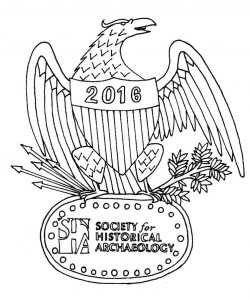 The District of Columbia is a strange political entity and our unique status has unexpected effects on local archaeology. But that makes it a perfect place to focus on the upcoming 50th anniversary of the National Historical Preservation Act (NHPA) of 1966 and the 100th anniversary of the creation of the National Park Service (NPS) in 1916, to be commemorated at the #SHA2016 conference. Why? Because Washington is a “special” federal enclave rather than a state and many District affairs are subject to federal laws. The District has a State Historic Preservation Office, or SHPO, that was established by, and is annually funded as a result of the NHPA regulations. The federal government owns 21.6% of the land in the District, so one-fifth of our land mass is directly subject to Section 106 of the NHPA. And 17% of District land is managed by NPS, making them a major partner in many archaeological projects.
The District of Columbia is a strange political entity and our unique status has unexpected effects on local archaeology. But that makes it a perfect place to focus on the upcoming 50th anniversary of the National Historical Preservation Act (NHPA) of 1966 and the 100th anniversary of the creation of the National Park Service (NPS) in 1916, to be commemorated at the #SHA2016 conference. Why? Because Washington is a “special” federal enclave rather than a state and many District affairs are subject to federal laws. The District has a State Historic Preservation Office, or SHPO, that was established by, and is annually funded as a result of the NHPA regulations. The federal government owns 21.6% of the land in the District, so one-fifth of our land mass is directly subject to Section 106 of the NHPA. And 17% of District land is managed by NPS, making them a major partner in many archaeological projects.
Washington, D.C. is also a residential city with numerous historic districts and its own preservation laws, and procedures. The SHPO also serves as the “local” Historic Preservation Office (DC HPO). The District has a rich cultural history that began long before it was chosen for the nation’s capital which includes both prehistoric and colonial resources. In recent years we’ve seen an explosion of development that has led to dozens of city-funded archaeological surveys in addition to the ones conducted for federal projects. The bulk of these local projects were on city park and school properties, which comprise some of our largest non-federal open spaces. Among the sites identified are significant prehistoric camps and quarries, Civil War-era military and contraband camps, antebellum estates and tenant farms, former cemeteries, and urban row houses and alley dwellings. Archaeology offers a unique perspective – and sometimes the only material evidence — on events that were often ignored or overlooked in documentary sources. As the city’s Archaeology Team, we operate at both the federal and city levels, consulting with agencies on project concepts to ensure locations that merit survey are identified early on in the planning process, reviewing survey work plans, and commenting on draft technical reports. We are also responsible for maintaining and managing the archaeological collections, all paper and digital records, the site files, our Geographic Information System (GIS), and the archaeological survey report library. Any outreach, and education we get to conduct is pure “gravy!” Our efforts are somewhatconstrained because Chardé Reid, the assistant archaeologist, is a limited-term contract. Despite the challenges, we have forged a public outreach program on a shoestring! We have developed strategic partnerships with a variety of groups, and rely on the contributions of our graduate student interns and volunteers. Stipends are sometimes available for our interns, but the real payoff for them is the experience in a SHPO, and mentoring as they enter the job market.
Archaeology has quite a bit of community support in the District and Washingtonians turn out at our events, tune in to radio shows, and email us all the time! Mitchell Park is a great example of this. The park is located on the site of a large farm-house built by Anthony Holmead in 1795, and is a National Register-listed property. When a neighborhood group, Friends of Mitchell Park, raised funds to renovate and improve the park, they also funded an archaeological investigation of the Holmead House site. Community members now serve as site guardians and vigilantly protect the resource, which remains buried beneath their feet. Community support for archaeology may be tied to other concerns, as when groups attempt to use site preservation as a tactic to impede development even before any investigations occur. This is a tricky line for us to walk, since we promote an archaeological preservation ethic, but we also need to be sensitive to public benefits of development. We can’t short-circuit the review process to appease one constituent, because there are many competing needs and perspectives.
We do as much public outreach as possible given all our other responsibilities and limited staff. As the city grows and our demographics change, it becomes increasingly important for residents (especially young people) to understand the city’s history, diversity, and unique neighborhoods. We talk to schools, clubs, community history and heritage groups, and at neighborhood libraries, and we bring along displays and artifacts from our collections. Student interns are a big part of these outreach events and often plan and program them. We have gained the most ground by partnering with local non-profits, such as Archaeology in the Community. They have the capacity to organize annual events like Archaeology Day (in October) and Day of Archaeology (in July). Even NPS has gotten involved at the local level by starting a summer Urban Archaeology Corps program comprising District high school through college-age youth, who learn about local history, archaeology, and NPS careers. While few UAC participants plan to study archaeology, their feedback indicates they like learning about their neighborhood history and regret not getting more of it in school.
The lens of archaeology is our tool for providing alternative perspectives on the District’s long and diverse history. We have the ability to look at groups often overlooked by more traditional history. The lens, while powerful, requires that some remnants of the past remain in the ground. Therefore, continued protection and management of archaeological resources are needed. But our efforts also need support from an educated and empowered public, who embrace and advocate for archaeology because they believe it enriches historical narratives. Identification and preservation of archaeological resources is best done by concerted efforts of preservation partners at every level, including Federal, District, and neighborhood entities. We look forward to engaging more groups as we increase our outreach capacity and visibility through our limited – but successful — “shoestring” efforts.
Chardé Reid, Assistant City Archaeologist, DC Historic Preservation Office
Lois Berkowitz, volunteer at the DC Historic Preservation Office
Ruth Trocolli, City Archaeologist, DC Historic Preservation Office
http://planning.dc.gov/historicpreservation
http://planning.dc.gov/page/archaeology-district-columbia
http://planning.dc.gov/publication/2016-district-columbia-historic-preservation-plan
http://www.nps.gov/rap/archeology/spotlight_ROCR.htmhttp://www.mitchellparkdc.org/history.html
http://www.archaeologyincommunity.com/
http://groundworkdc.org/programs/urban-archeology-corps/
http://ncptt.nps.gov/blog/nps-archeology-program-urban-archeology-corps/
Historical Archaeology at George Washington’s Mount Vernon
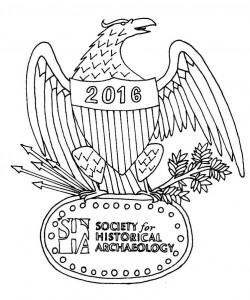 Greetings from Virginia! Though the #SHA2016 Annual Meeting is some months away, we are assisting the social media committee in presenting the archaeological outlets that the Washington, DC metro area has to offer. Archaeology plays a major role towards interpreting George Washington’s Mount Vernon, and we are pleased to take this opportunity to briefly introduce our program and some of our recent projects.
Greetings from Virginia! Though the #SHA2016 Annual Meeting is some months away, we are assisting the social media committee in presenting the archaeological outlets that the Washington, DC metro area has to offer. Archaeology plays a major role towards interpreting George Washington’s Mount Vernon, and we are pleased to take this opportunity to briefly introduce our program and some of our recent projects.
George Washington called Mount Vernon home for 45 years, and though two wars and a Presidency often called him away from his estate, Mount Vernon was his life’s work. Washington transformed a modest farm house into the mansion we see today, significantly altered the grounds around his homelot to create a formalized ornamental landscape, and successfully farmed an 8,000 acre plantation. A period of estate decline following Washington’s death in 1799 sparked a nation-wide effort to preserve Mount Vernon, spearheaded by the Mount Vernon Ladies’ Association (MVLA) who bought the mansion house and the surrounding 200 acres in 1858.
While archaeological investigations at Mount Vernon have occurred since the 1930s, the majority of collections are from the professional archaeology program established in 1987 and a survey of the property conducted in 1984 and 1985. Excavations have yielded over a million artifacts providing a rich assemblage to study the intertwined lives of the plantation community: enslaved individuals, hired white workers, and Washington family members. Since the department’s inception we have excavated significant sites within Mount Vernon’s historic core including the south grove midden, a large concentration of trash associated with the Washington family from c. 1735–1765, and the House for Families cellar, the main slave dwelling used from c.1760—1793 located at Washington’s Mansion House Farm. Archaeological excavation and research has contributed to the re-discovery and reconstruction of George Washington’s whiskey distillery, a major operation which may have been the largest one of its kind in the United States by the close of the 18th century.
Our archeology team is part of the Preservation Division of the larger Mount Vernon Department of Historic Preservation and Collections. Esther White directs our division, with archaeological fieldwork under the supervision of Deputy Director for Archaeology Eleanor Breen and Assistant Director for Archaeological Research Luke Pecoraro. Karen Price is our lab manager and photographer, and Leah Stricker serves as the field crew chief. Within the division is Deputy Director for Architectural History Thomas Reinhart, assisted by his staff of architectural conservator Steve Stuckey, and preservation technicians Elizabeth Rival and Caroline Spurry. Our staff also includes Eric Benson, who manages our GIS and viewshed preservation efforts. With our small staff we work together to fulfill the goals of our department to maintain, research, and manage the valuable historic resources at Mount Vernon.
Current fieldwork will return us to the south grove this summer to fully investigate the transformation of the space form a work yard to a formal landscaped area, and we will continue an ongoing program of public archaeology in the estate’s slave cemetery. Our survey of the slave cemetery is an attempt to better understand the layout and number of individuals interred in a plot located just 200 feet south of the Washington family tomb. Our field and labwork keeps us busy year-round, and we regularly post updates via our FaceBook page—Historic Preservation at Mount Vernon—and invite you to follow us. An intensive evaluation of the finds from the south grove midden including high-quality artifact photographs was launched in web form recently and can be viewed here: http://www.mountvernonmidden.org/. Our website provides a great resource for these sites and programs in addition to the other activities going on at Mount Vernon: http://www.mountvernon.org/research-collections/archaeology/.For those of you who want to join us in the field this summer, check out our field school in historic preservation – http://www.mountvernon.org/research-collections/archaeology/volunteer-or-intern-with-the-archaeology-team/.
Famed 19th-century orator Edward Everett once remarked “A visit to the National Capital is but half made unless it includes the home and tomb of Washington.” When you make the trip to attend next year’s annual meeting, we hope that you will take some extra time for a visit to George Washington’s Mount Vernon.
AMDA and APP: Two Training Programs in Archaeological Metal Detecting
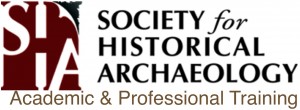 Guest post by Christopher Espenshade and Patrick Severts
Guest post by Christopher Espenshade and Patrick Severts
Our goal here today is to introduce two training programs in best practices in metal detecting. Many battlefield studies rely heavily on metal detecting as an investigative method, and metal detecting can be labor intensive. The study of a battlefield can require many persondays of detecting; where will this expertise be found? The authors have been involved in the creation of two classes designed to provide metal detecting personnel who can apply best practices in metal detecting to professional research.
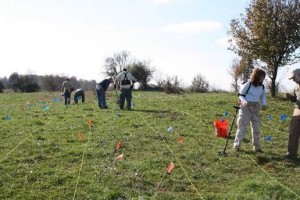
AMDA Field Session, Winchester, Virginia, USA
Advanced Metal Detecting for the Archaeologist (AMDA) is a continuing education class aimed at professional archaeologists. The class is certified by the Register of Professional Archaeologists (RPA). We are clear in our belief that improving best practices in metal detecting will improve the quality of battlefield studies.
The second course, Archaeological Partnership Program (APP), is designed for avocational detectorists who would like to work in tandem with professional archaeologists. Avocational detectorists have great skills, local knowledge, a keen interest, a commitment to history, and a desire to help preserve battlefields and similar military sites. Through the training of a corps of avocational detectorists, APP is developing a resource that will help in the study and preservation of battlefields.
Taken together, AMDA and APP increase the skills of professional archaeologists and avocational detectorists, and reinforce the bridge between these two groups. These training efforts will have positive results on quality of battlefield studies, the level of public engagement, and the development of local advocacy for battlefield preservation.
AMDA CLASS
The AMDA class was born in 2011, when several archaeologists recognized the need to teach best practices in metal detecting to professional archaeologists. We saw that professional archaeologists were finally accepting that metal detecting was a valuable tool, but there was no good source for instruction in metal detecting. AMDA began as a conference/class hybrid in October 2011 in Helen, Georgia.
Based on the response to the Helen event, and in conjunction with the new RPA program for certifying continuing professional education classes, the founders of AMDA chose to focus solely on instruction. The founders included Sheldon Skaggs, Garrett Silliman, Patrick Severts, Doug Scott, Terry Powis, and Chris Espenshade. After formalization of the instructor corps and course offerings, AMDA was certified by the Register of Professional Archaeologists. We were proud to be the first continuing education course to receive this important certification.
The AMDA class recognizes that the three main factors affecting the efficacy of a metal detector investigation are: 1) competency of the operators; 2) appropriateness of the device to the task at hand; and 3) suitability of the research design. The class includes eight hours of classroom instruction, where we present best practices. The class notebooks also include a case study CD with examples of successful research efforts.
We also recognize that professional archaeologists need an opportunity for instructor-monitored, hands-on, practical field experience with a variety of currently available devices. AMDA has created a partnership with several manufacturers and retailers who provide trial models at various price points. Our fieldwork sessions are designed to contribute to the research needs of our local hosts, and we work on real problems on real sites.
We have presented the class five times: August 2012 in Charleston, SC; April 2013 in Lagrange, Georgia; November 2013 in Winchester, VA; August 2014 in Stone Mountain, Georgia; and February 2015 in Brownsville, Texas. We currently have a few spaces left for our upcoming class in Harrisburg, PA, April 4-26. To date, 105 archaeologists have completed our training. The course has seen a broad mix of graduate students, CRM consultants, and state and federal agency personnel.
APP CLASS
Avocational detectorists have long been a potential source of labor and expertise in battlefield studies. Unfortunately, many professional archaeologists avoid engaging avocational detectorists. These reasons for this avoidance include: certain professional archaeologists are suspicious of the ethics of avocational detectorists; professional archaeologists do not want to be seen as condoning relic hunting; and certain professional archaeologists do not feel that avocational detectorists understand how and why professional archaeologists do what we do. We found ourselves sort of stuck with a paradox. On the one hand, we (and the profession in general) long for avocational detectorists to embrace a preservation ethos and begin working closely with archaeologists, but on the other hand we have not provided them any guidance or training toward that goal (again, with the exception of Matthew Reeves’ Montpelier program). The profession sacrifices our right to complain about relic hunters if we continue to ignore the training of avocational detectorists. In the context of the current professional angst over the reality TV of metal detecting, we could not condone complaining about behaviors without trying to change said behaviors. We knew from a number of projects and other contacts with avocational detectorists that this community held many with a strong interest in history and a willingness or desire to work with professional archaeologists.
In autumn of 2013, Chris Espenshade, Patrick Severts, Doug Scott, and Matthew Reeves began working with Minelab, a major manufacturer of detectors, to develop the APP course.
From the onset, we were aware of the risk, mentioned above, that we might be perceived as offering a class to improve the skills of looters (again, not all professional archaeologists appreciate the difference between relic hunters and avocational detectorists). Instead of focusing on actual metal-detecting skills, we designed the course to emphasize how and why professional archaeologists do what they do. We hope to make avocational detectorists understand and buy into the professional approach to metal detector research.
The class is offered only to avocational detectorists willing to sign and abide by this ethics pledge:
I will neither purchase nor sell artifacts. I will not detect on any property without written permission of the land owner. I will record all discovered sites within 30 days with the state site files. I will keep records on the location of all materials I recover. I will not excavate any targets below the topsoil/plowzone. I will not disturb any human remains. I will report sites threatened by development or other actions to the state archaeologist or state historic preservation office. I will share data and knowledge with professional archaeologists. I will partner, when feasible, with professional archaeologists to assist in the preservation and study of archaeological resources. I will strive to be a responsible avocational detectorist. I understand that violation of this pledge may result in my name and contact information being removed from the APP database of responsible avocational detectorists.
The class teaches avocational detectorists how professional archaeology differs from hobby collecting, and why professional archaeologists do things as they do. We let students know how they might find opportunities to work with professionals. We stress that there is an over-riding concern among both the professional archaeology community and the avocational detectorist community to stem the flow of site loss. We emphasize that avocational detectorists and professional archaeologists can work together to study sites that would otherwise be lost (i.e., that fall outside Section 106 or similar protection).
We also recognized the risk that the APP class might be seen by certain skeptics as a pay-to-dig opportunity. When a real archaeological site is used in training detectorists, the situation can be viewed as the participants paying for the opportunity to detect on a neat site. To avoid this, APP classes are held only on test gardens (site proxies created only for the class, using modern replicas of key artifact classes). None of the APP class work occurs on actual archaeological sites.
We also wrestled with the question of policing the behavior of our graduates. These are not professional archaeologists and cannot be held to RPA/SHA/SAA ethical standards. There is no threat that they will lose their registration or membership for ethical lapses. We instead created an ethical standard for avocational detectorists who wish to undergo APP training and become part of the APP program. Those graduates who take the pledge and abide by it will be placed on an internet data base of responsible avocational detectorists willing to work with professional archaeologists. Many avocational detectorists are willing to spend a week or two of their vacation assisting on the study of an interesting battlefield. If we learn that a graduate has broken their pledge, they will be removed from the database.
In creating the pledge, we recognized the need for a compromise between our strict professional ethics and the desire of avocational detectorists to be able to pursue their hobby in the absence of a professional archaeologist. We felt that this is a reasonable compromise.
Our goals with APP are: 1) to create a legion of responsible avocational detectorists with an understanding of how and why professional archaeological projects are undertaken; 2) to provide a resource to professional archaeologists who might need assistance on their projects; and 3) to create partnerships between professional archaeologists and avocational detectorists to help preserve archaeological data. With the backing of Minelab, the first class was presented in Chicago in September of 2014. Registration filled quickly and the student feedback from the course was overwhelmingly very positive. APP will be working closely with Minelab to present the class many times a year in different parts of the country.
Meet a Member: Jodi Barnes
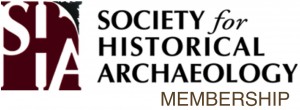 Here’s the latest in our series of entertaining interviews with a diverse array of your fellow SHA members. Meet a member for the first time or learn something about a colleague that you never knew before. This blog series also offers current members an opportunity to share their thoughts on why SHA membership is important (Camaraderie? Professional service? Exchange of ideas in conference rooms and beyond? You tell us!). If you would like to be an interviewee, please email the Membership Committee Social Media Liaisons Eleanor Breen (ebreen@mountvernon.org) or Kim Pyszka (kpyszka@aum.edu).
Here’s the latest in our series of entertaining interviews with a diverse array of your fellow SHA members. Meet a member for the first time or learn something about a colleague that you never knew before. This blog series also offers current members an opportunity to share their thoughts on why SHA membership is important (Camaraderie? Professional service? Exchange of ideas in conference rooms and beyond? You tell us!). If you would like to be an interviewee, please email the Membership Committee Social Media Liaisons Eleanor Breen (ebreen@mountvernon.org) or Kim Pyszka (kpyszka@aum.edu).
Jodi A. Barnes received her Ph.D. in Anthropology from American University in Washington, DC. She is currently a Station Archeologist and a Research Assistant Professor with the Arkansas Archeological Survey, a unit of the University of Arkansas system. Her research interests include the archaeology of the African diaspora, the U.S. Home Front, and public archaeology. She recently published the edited volume, The Materiality of Freedom: Archaeologies of Post-Emancipation Life.
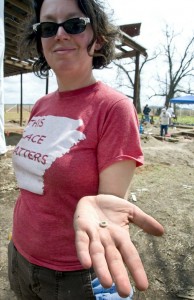 What is the first site you worked on? What is the last one (or current one)?
What is the first site you worked on? What is the last one (or current one)?
The first field site I worked on was the Kolb Site in South Carolina with Chris Judge and Carl Steen. They hold a dig at the multi-component site during spring break each year and volunteers and students come from all around to participate. I loved getting my hands dirty, the sore muscles and the excitement of touching the past. It was the first place I saw public archaeology in action and the start of great friendships. Currently, as a public archeologist with the Arkansas Archeological Survey, I am working on two projects, a World War II prisoner of war camp and a plantation. I try to make those projects fun and welcoming learning experiences similar to the Kolb site.
Fieldwork or labwork?
I’m not an either/or person when it comes to lab and fieldwork. I think they are both important and I enjoy doing both. When I was looking for a Ph.D. topic, my advisor, Joan Gero, encouraged me to do a project that built upon previously excavated collections. I was afraid that I might not be as marketable if my dissertation didn’t include fieldwork, so I opted to do fieldwork in the Blue Ridge Mountains of Virginia. But the importance of working on collections that have not been written up has stayed with me and I am currently trying to develop public programs that emphasize both the lab and the field.
What are you currently reading?
I am currently reading Laurie Wilkie’s (2014) new introduction to archaeology, Strung Out on Archaeology: An Introduction to Archaeological Research. I am using it in my class this spring. I am also reading a collection of short stories by Ron Rash. I love his storytelling and the way he draws the southern Appalachian landscape.
What did you want to be when you grew up?
When I was growing up, I wanted to be a fashion designer. This is difficult for most people who know me know to believe. I still think about it in terms of stylish, fashionable and versatile clothing for women who move between the field and the office or conference presentation. But the world of fashion design was not for me, so I switched to journalism. At that time, my ideal writing assignment would have been an article for National Geographic. That’s where I found anthropology and it is a good thing I wanted to write.
At what point in your career did you first join SHA? Why are you a member of SHA?
I joined SHA as a Ph.D. student. I attended my first conference in 2007 in Williamsburg, Virginia and I have been a member since then. I‘ve continued to be a member because of the collegiality, knowledge sharing, and community. I look forward to seeing my colleagues each year, attending symposiums, hearing about their ongoing projects, and learning new things, but also as importantly talking about our work over beers.
Which benefit of belonging to SHA do you find the most beneficial?
Getting involved with the SHA committees is one of the most valuable benefits of being a member of SHA. In 2007, Linda Ziegenbein told me she was going to the Student Sub-Committee meeting. This is a sub-committee of the Academic and Professional Training Committee (APTC). Immediately, I was recruited to manage the student listserv. I got to know students around the country who were interested in topics similar and different from me. We co-authored articles for the SHA Newsletter and organized panels. Later, I became more involved with APTC and helped with a number of projects including the syllabus clearinghouse project and the student paper competition. Later I got involved with the Gender and Minority Affairs Committee. It has been great to be involved in the work committee members are doing on mentoring, anti-racism, and developing fellowships. Being active in SHA committees, I have developed great friendships, but I also feel like I am playing an active role in shaping the future of historical archaeology (and I will always be grateful that I read the 1983 edited volume by Joan Gero, Michael Blakey and David Lacy about the socio-politics of archaeology, for making me realize how important this is).
Which article from Historical Archaeology has been the most influential to you?
Selecting one article that has been most influential is very difficult. But Carol McDavid and David Babson’s 1997 thematic issue, “In the Realm of Politics: Prospects for Public Participation in African-American and Plantation Archaeology,” (1997, Issue 31, volume 3) ranks high on the list. The authors underscored the fact that archaeology should be “useful” and that public archaeological practice is inherently political, especially when it deals with the archaeologies of disenfranchised peoples.
COME TO PRESERVATION ADVOCACY WEEK IN WASHINGTON, DC!
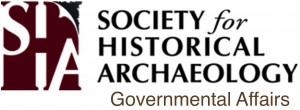 Society for Historical Archaeology members are invited to join the National Conference of State Historic Preservation Officers (NCSHPO) and Preservation Action for Preservation Advocacy Week, March 2-4, 2015! Preservation Action and NCSHPO organize Preservation Advocacy Week each year, bringing over 250 preservationists to Washington, DC to promote sound federal preservation policy and programs. Active participation from SHA members will ensure that historical archaeology is an integral part of the preservation discussion.
Society for Historical Archaeology members are invited to join the National Conference of State Historic Preservation Officers (NCSHPO) and Preservation Action for Preservation Advocacy Week, March 2-4, 2015! Preservation Action and NCSHPO organize Preservation Advocacy Week each year, bringing over 250 preservationists to Washington, DC to promote sound federal preservation policy and programs. Active participation from SHA members will ensure that historical archaeology is an integral part of the preservation discussion.
Highlights:
- Programming on Monday afternoon, March 2.
- Hill visits on Tuesday, March 3.
- Reception on the Hill on Tuesday evening, 5:30 pm.
The preliminary program is available at http://www.preservationaction.org/wp-content/uploads/2015/01/preservation-advocacy-week-prelim-program-2015.pdf.
Cultural Heritage Partners, SHA’s governmental affairs consultant, is planning to take SHA members attending Advocacy Week to the Hill to visit Congress. This is a great opportunity to meet with your Congressional representatives and to discuss the value of historic preservation and historical archaeology!
Please email Marion Werkheiser and let us know if you plan to attend!
marion@culturalheritagepartners.com
NCSHPO has secured a room block at the Fairfax Embassy Row hotel. Rooms are $239/single, $259 double and you can book by calling 1-888-627-8439, code 7266. More competitive rates may be available at other hotels in Dupont Circle (check out www.hotwire.com or www.kayak.com). We encourage you to stay in the Dupont Circle neighborhood for convenient access to Preservation Advocacy Week events and Metro transportation.
Please register at: https://www.regonline.com/builder/site/Default.aspx?EventID=1663726
Who Digs in D.C.?
What do you know about the D.C. area, archaeologically? What institutions, organizations, nonprofits, public agencies manage and help preserve our dc archaeological heritage? In upcoming posts, we will be highlighting some of the major D.C. (and surrounding MD and VA) area organizations, who diligently work towards safe-guarding, interpreting, and disseminating our the historical heritage of our Nation’s Capitol City.
These organizations have only expanded in reach, especially since the passing of the NHPA in 1966, a major movement for historic preservation and the field of archaeology. Some of these organizations advise and help guide policies, while others help generate public interest in specific issues. Some make major contributions to areas of study, and others help promote studies through outreach programs. In this way, D.C. manages archaeological heritage on a national but also local scale.
Take a peek, below, at some of these D.C. area organizations!
Comments Sought for New Proposed Rule Concerning the Deaccession of Federally Owned and Administered Collections
Chair, SHA Collections and Curation Committee
The subject of deaccession, or the permanent removal of an object from a museum or historical collection, has long been of concern to historical archaeologists. The SHA has highlighted the issue in recent years and has held workshops and conference sessions on the subject in an effort to bring the topic into the mainstream. We now draw your attention to a proposed amendment to Federal regulations on curation, and are soliciting your comments.
In the United States, regulations known as the “Curation of Federally Owned and Administered Archaeological Collections,” or 36 CFR Part 79, were issued in 1990 to address the responsibilities of Federal agencies and others holding Federal collections to archaeological collections in their custody. These regulations did not address the deaccession of archaeological materials, an issue that the Department of the Interior (DOI) is now proposing to remedy through an amendment to 36 CFR Part 79. The proposed amendment will “establish definitions, standards, and procedures to dispose of particular material remains that are determined to be of insufficient archaeological interest.” The proposed amendment (or rule) is expected to “promote more efficient and effective curation of these archeological collections.”
The proposed amendment has been published in the Federal Register (you can access that notice at http://www.nps.gov/archeology/tools/laws/Proposed_36_CFR_Part_79_Amendment.pdf). DOI is soliciting comments for its consideration in adopting the amendment. Comments are due on Tuesday, February 17, 2015 and can be submitted electronically, by mail, or by hand delivery to DOI.
SHA also plans to submit comments for DOI’s consideration. To prepare comments that best represent the Society’s membership and its diverse views on this topic, SHA’s Collections and Curation Committee (CCC) invites your input on this important topic. The CCC will collect members’ input and use this input to prepare SHA’s formal comment over President Charlie Ewen’s signature.
CCC member Julie King will be collecting and collating this input for the CCC’s consideration.
Regardless of whether or not you work in the United States or with Federal collections, all SHA members are invited to help shape the Society’s thinking about this important international issue.
The CCC has asked for your comments to be received no later than Tuesday, February 10, 2015. This is a strict cutoff point in order to allow the CCC to review all of the input received and prepare a formal comment that best represents the Society’s membership. Your comments can be sent to Julie by email at jking@smcm.edu. You can of course comment individually directly to the DOI but we would appreciate your input to the SHA’s formal reply.
Thank you in advance!
Meet a Member: Laura Seifert
 Here’s the latest in our series of entertaining interviews with a diverse array of your fellow SHA members. Meet a member for the first time or learn something about a colleague that you never knew before. This blog series also offers current members an opportunity to share their thoughts on why SHA membership is important (Camaraderie? Professional service? Exchange of ideas in conference rooms and beyond? You tell us!). If you would like to be an interviewee, please email the Membership Committee Social Media Liaisons Eleanor Breen (ebreen@mountvernon.org) or Kim Pyszka (kpyszka@aum.edu).
Here’s the latest in our series of entertaining interviews with a diverse array of your fellow SHA members. Meet a member for the first time or learn something about a colleague that you never knew before. This blog series also offers current members an opportunity to share their thoughts on why SHA membership is important (Camaraderie? Professional service? Exchange of ideas in conference rooms and beyond? You tell us!). If you would like to be an interviewee, please email the Membership Committee Social Media Liaisons Eleanor Breen (ebreen@mountvernon.org) or Kim Pyszka (kpyszka@aum.edu).
An Interview with Laura Seifert, Co-director of the Digging Savannah project and Instructor in the Department of Criminal Justice, Social and Political Science at Armstrong Atlantic State University.
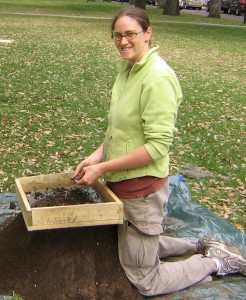 What’s the most interesting artifact you’ve ever found?
What’s the most interesting artifact you’ve ever found?
If I had to pick a single artifact, my favorite would be the small, brass key I found at the St. Johns site in Historic St. Mary’s City, Maryland. It was shorter than the length of my finger and perfectly preserved, with a beautifully intricate, teardrop shaped handle.
What is the first site you worked on? What is the last one (or current one)?
The first site I worked on was at the Harriet Tubman house. It was a domestic site, but I don’t remember any specifics. The dig was a day field trip with my Introduction to Historical Archaeology class at Syracuse University. The last site I worked on was at Old Fort Jackson in Savannah, GA. We were investigating the dome-shaped, soil-over-concrete top of the 1870s powder magazine, which proved to be very complicated logistically. (How to get the dirt into the screen? It was messy.) We had amazing views of the river all the way to downtown Savannah, however it was absolutely freezing (for Savannah).
Fieldwork or labwork?
Fieldwork. Duh.
If you could go back in time for only 10 seconds – where, when, and why?
The western wall of George Washington’s whiskey distillery shortly after its construction: I spent nine months excavating a tiny addition to the building. What was it? The malt kiln?
What are you currently reading?
“On the Rim of the Caribbean: Colonial Georgia and the British Atlantic World” by Paul M. Pressly and thanks to my favorite thrift store, I finally jumped on the “Game of Thrones” bandwagon.
Why are you a member of SHA?
I am a member of SHA for the journal, online access to back issues of the journal, and conferences. I also value the outreach and lobbying we do as an organization (National Geographic, anyone?). The SHA website is also getting to be an incredible resource with Bill Lindsey’s Historic Bottle Identification Guide and other specialized artifact guides coming online.
At what point in your career did you first join SHA?
When I graduated with my BA in December 2000.
How many years have you been a member (approximately)?
Doing the math, 14 years, but I think I missed a few along the way.
Which benefit of belonging to SHA do you find the most beneficial?
The journal, website, and the publications explorer online, because I rarely get to go to conferences any more, and 2015 is not looking good either!
Please join us for #SHA2016!

Did you enjoy #SHA2015? Please join us for #SHA2016!
The Organizing Committee for the #SHA2016 Conference on Historical and Underwater Archaeology invites you to Washington, D.C., the Nation’s Capital, January 6-9, 2016! The year 2016 marks the 100th anniversary of the creation of the National Park Service in 1916 and the 50th anniversary of the passage of the National Historical Preservation Act of 1966. Because of the synchronicity of these events, and the conference location, #SHA2016 will focus on the past development and future prospects of Historical Archaeology. The #SHA2016 theme, “A Call to Action: the Past and Future of Historical Archaeology”, encourages us to consider the impact of the NPS and NHPA on the practice of Historical Archaeology.
Washington, D.C. represents both the Federal City and the District of Columbia, providing an exciting, dynamic environment. Washington, D.C. is not only home to policy movers and shakers, but offers rich local and national histories, long preserved and made accessible by its numerous museums and institutions. In recent years, Washington, D.C. has undergone transformations that have highlighted the culturally diverse neighborhoods that make up the city, for instance, the new and flavorful restaurants, bars, and local markets. We hope to see you at #SHA2016, to reflect on how far Historical Archaeology has come, since the early 20th century!







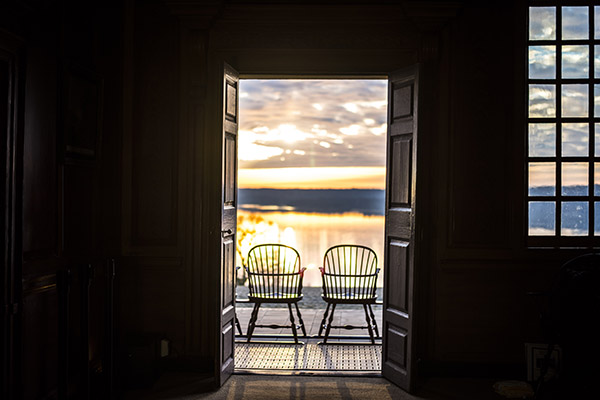

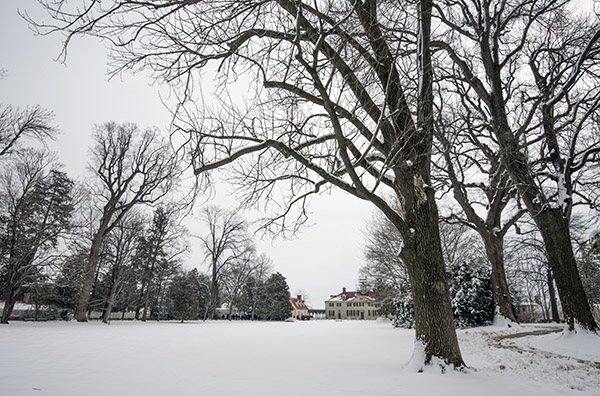
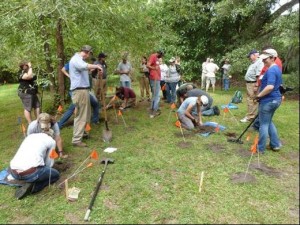
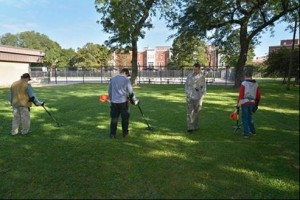
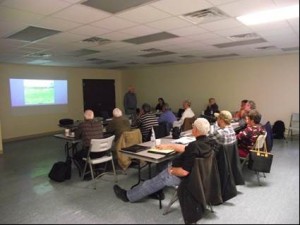



Pingback: WAC May 2012 eNewsletter – Volume 40 – World Archaeology Congress